Checkers
Checkers (which is also known as chequers or draughts) was first played in France during the 12th century, possibly based on the even older game of Alquerque. It is a fun strategy game for children and adults, and can produce a lot of rivalry.
Age: Adults and older children
No. of players: 2
Equipment: Checkers/Chess board; 24 counters (12 per player in two different colours, usually black and white or black and red). The counters are called 'pieces' or 'men'. Sometimes they have a crown on one side to show a piece has become a King (see step 4); if so, pieces start the game with the crown face-down. (If you would like to print your own board and/or pieces at home, we have a printable Checkers board you can open in a new window by clicking here.)
Time: 5-20 minutes+
Aim: To capture all your opponent's pieces or block them so they cannot move.
Subscribe to the RSS feed on the Navigation Bar over to the left
or bookmark this site (top of the right column) and visit often.
1. The checkers board is set up as shown. Note that the game is only played on the black squares, with the black square in the lower left corner. One player holds a black counter in one fist and a white counter in the other fist. The other player chooses a fist. The player with the black counter goes first.
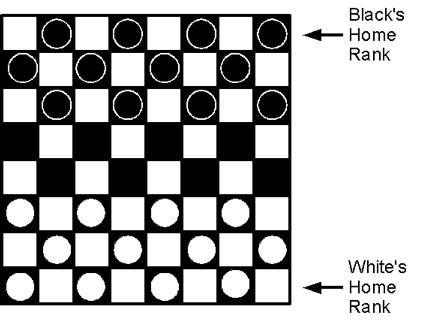
2. Players take alternate turns to move one piece diagonally to a vacant square, starting with Black. This means that only pieces in the third rank can move on the first turn. Pieces can only move forward (on a diagonal). Once a piece has moved and you take your finger off it, it cannot be moved again until your next turn. (This rule may be relaxed for children.)
3. Players can capture an opponent's piece by jumping over it in a straight line to a vacant square. Captured pieces are removed from the board. Capturing is not optional - you must capture an opponent's piece if there is an opportunity to do so. If you fail to do so, your piece can be removed from the board. If there are two or more pieces you could capture, you can choose which one you will take. You can also capture multiple pieces as long as there is a vacant square between each piece, even if they are not in a straight line (see diagram below). Note: Good players can use a forced capture in a strategic move to make their opponent move a piece for their own advantage. You may lose one piece but can position their pieces for a multiple capture. (Again, children may relax the rule about forced captures.)

4. If a player moves one of their pieces to the home rank of the opposing player, that piece becomes a King. Some counters are designed with a crown on one side, so that the piece can be flipped over to show it is a King. Other counters are made to fit on top of each other so that a King is shown by two pieces joined together. A King can move one square forwards or backwards in a diagonal line.
5. The game finishes when one player captures all their opponent's pieces or blocks their opponent so they cannot move any of their pieces. Unfortunately, games quite often end in a draw when neither player can block or capture all of their opponent's pieces. As the Australian bushranger, Ned Kelly, said just before he was hanged, "Such is life!"
| Click on the links below for more Family Board Games including ... |
|
Do you have a favourite Board game that you want to share with all our readers? You can share YOUR Board game and/or check out other readers' favourite Board games. It's easy! Just click on this share YOUR Board game link and follow the instructions. |
Thank you for visiting our website!
Parlor Games | Board Games | Traveling Games | Tile (Domino) Games
Card Games | Worldwide Games | Outdoor Games | Dice Games | Word Games
Christmas Games | Easter Games | Thanksgiving Games
Family Reunion Games | Valentines Games
Great Gift Ideas
 Cashflow |
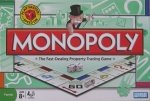 Monopoly |
 Family Trampoline |
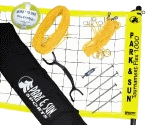 Volleyball Set |
 Table Tennis Table |
Ebooks
 The Family Guide to Party Games |
 The Family Guide to Christmas Games (Volume 1) |
 The Family Guide to Christmas Games (Volume 2) |
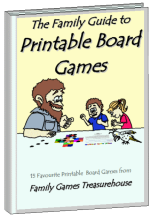 The Family Guide to Printable Board Games |
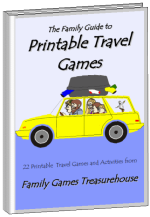 The Family Guide to Printable Travel Games |


